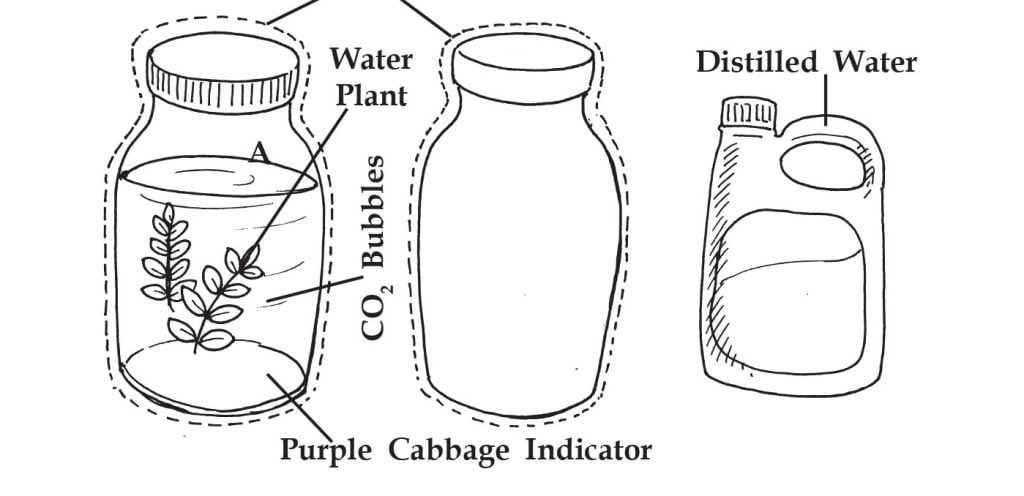
All plants and animals exhale carbon dioxide. This is shown here in this easy experiment.
Things Required:
Distilled water
1 quart (1 litre) of purple cabbage indicator (see preparation instructions below)
Sprig of Elodea or other water plant (found at pet store)
3 pint (500 ml) jars with lids
Straw
Aluminium foil
Directions:
Making the Purple Cabbage Indicator
Cut a head of purple cabbage into small pieces. The leaves may be pulled off and torn into small pieces. Place the cabbage pieces in a two-quart bowl. Add enough hot distilled water to fill the bowl. Allow the cabbage to stand until the water cools. Discard the cabbage pieces and save the blue liquid.
Showing that Plants Breathe
Rinse the jars with distilled water. Place the Elodea in one of the jars. Fill the jar with purple cabbage indicator. Put the lid on the jar and cover the outside of the jar with aluminium foil.
Pour one-half of the remaining cabbage juice into a second jar. Close the lid, and cover the outside of the jar with aluminium foil. Position both jars so that they may not be disturbed for 2 days. Pour the remaining cabbage juice into the third jar.
Use a straw to exhale into the solution until a colour change occurs.
This Is What Happens:
The indicator with the plant and the one exhaled into both turn from blue to reddish colour. The third solution is unchanged.
Science Behind It:
The indicator contains water and a dye extracted from the purple cabbage. Carbon dioxide from exhaled breath and from the plant combines with the water to form a weak acid called carbonic acid. The cabbage dye turns red when mixed with any acid. Plants produce oxygen by a process called photosynthesis. This requires sunlight. What do they do at night when there is no sun? It is in the dark that they use oxygen and food as do animals, to produce carbon dioxide, water and energy. This is called respiration.
